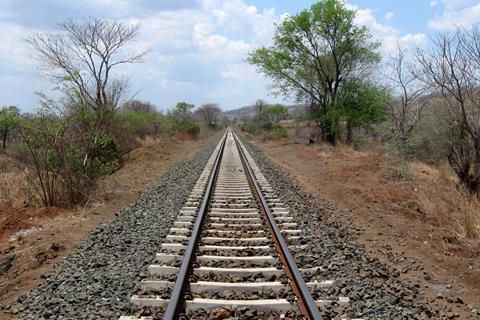
MOZAMBIQUE: Huawei has been chosen to equip the 1 067 mm gauge routes operated by Caminhos de Ferro de Moçambique with a digital communications system based on FRMCS. Designed to ensure robust and stable communications for train-to-ground voice and data links, it replaces legacy infrastructure based on GSM-R.
With the prospect of mining and general cargo traffic increasing on the lines it operates between Indian Ocean ports and neighbouring countries, CFM had been faced with the choice of doubling its investment in GSM-R with the risk of obsolescence in the next few years, or switching to a future-proof system. GSM-R is not expected to be able to support the bandwidth, latency, and connectivity required for tomorrow’s digital communications, so CFM chose to work with Huawei to deploy an LTE network adopting the FRMCS architecture.
The Chinese company designed a targeted, integrated dispatching communications system based on FRMCS with an architecture meeting international standards. This uses an advanced converged communication platform to provide MCX wireless broadband trunking and multimedia dispatching communication services. It also supports all-IP communication networks and enables mission-critical communications and rich multimedia dispatching.
Able to transmit real-time information, the system supports specific railway business tasks, such as function codes and emergency calls. It provides panoramic, visualised, and controllable dispatching and commands for signalling and control staff, locomotive drivers, and transport management. Huawei says that this improves safety and security and helps to enhance the efficiency of operations and maintenance.
Better safety
Huawei notes that Mozambique has already started to benefit from FRMCS, with CFM improving scheduling efficiency and operations as well as employee management. It has helped to reduce the number of collisions and other accidents, including those affecting track and maintenance personnel. In the long term, its deployment means that the foundations have already been laid for future railway enhancement projects.
The International Union of Railways began developing FRCMS in 2012, working with standards organisations like European Telecommunications Standards Institute and 3rd Generation Partnership Project (3GPP) to promote railway digitalisation.
FRCMS is intended to work in parallel with GSM-R until 2025 when the transition to 5G telecoms will commence with the UIC envisaging completion around 2030. Because the FRMCS 5G standard has not been frozen, in Mozambique LTE networks suitable for upgrading to 5G were chosen to enable continuous evolution of the FRMCS standards, while at the same time meeting commercial deployment requirements.
Capacity for handling coal on the 74 km Goba line from the border with Eswatini to Maputo is currently 7 200 tonnes a day. Cargo moving through Maputo increased from 22 million tonnes in 2021 to 26∙7 million tonnes in 2022, and the 2023 figure is expected to exceed 30 million tonnes.
CFM Chairman Miguel Matabel says that ‘CFM’s railway communication system is the first in the world to use the latest FRMCS architecture. It provides an independent dedicated communication network for us to carry our business data. This not only reduces our network rental costs, but also ensures train and site security and smooth communication between stations. This promotes CFM’s digitalisation transformation.’
The CFM network consists of CFM-South (696 km), covering the Limpopo (534 km), Ressano Garcia (88 km) and Goba (74 km) lines; CFM-Central (864 km), covering the Sena (545 km) and Machipanda (319 km) lines; and CFM-North (872 km) covering the Nacala – Cuamba – Entre-Lagos (610 km) and Cuamba – Lichinga (262 km) lines.

















